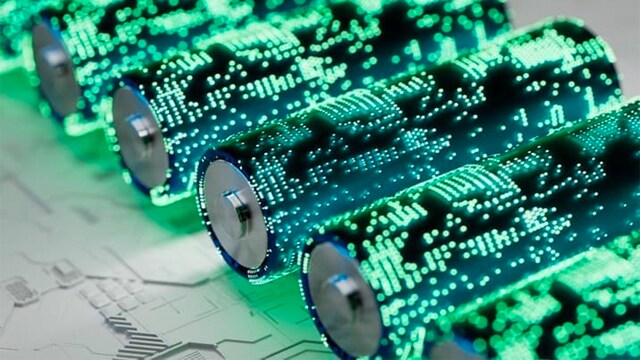AI helps scientists discover new substance which could reduce lithium use in batteries
Microsoft and the US Department of Energy have used AI and supercomputing to ‘discover’ a new substance that would reduce lithium usd in Li-ion batteries by up to 70 per cent. Lithium, apart from being a very rare metal is also very polluting to mine
A groundbreaking substance, potentially reducing lithium use in batteries by up to 70 per cent, has been discovered through a collaboration between Microsoft and the Pacific Northwest National Laboratory (PNNL), part of the US Department of Energy.
Using AI and supercomputing, Microsoft researchers narrowed down 32 million inorganic materials to 18 promising candidates in less than a week, a process that traditionally could take over two decades.
The newly found material, currently named N2116, is a solid-state electrolyte, tested successfully in powering a lightbulb, and holds the potential for sustainable energy storage.
Related Articles

Tesla completes building the world’s largest Lithium ion battery in 100 days

Workers preparing to enter US underground nuclear dump
Microsoft’s AI, trained on molecular data, played a pivotal role in accelerating the material discovery process.
The technology, focused on scientific databases and properties, guided researchers to select the most promising substance for further lab experimentation.
The entire journey, from material discovery to developing a working battery prototype, took less than nine months, showcasing the efficiency of AI and high-performance computing in the scientific innovation cycle.
The discovery is crucial in addressing the rising demand for lithium, often referred to as “white gold,” a key component in lithium-ion batteries powering electric vehicles and smartphones.
The material shortage concerns, coupled with environmental impacts associated with lithium mining, underscore the significance of finding alternative materials with reduced lithium content and robust energy storage capabilities.
Researchers believe AI and supercomputing will play essential roles in predicting and developing high-performing materials in the evolving landscape of battery technology.

Microsoft and the US Department of Energy have used AI and supercomputing to ‘discover’ a new substance that would reduce lithium usd in Li-ion batteries by up to 70 per cent. Lithium, apart from being a very rare metal is also very polluting to mine
A groundbreaking substance, potentially reducing lithium use in batteries by up to 70 per cent, has been discovered through a collaboration between Microsoft and the Pacific Northwest National Laboratory (PNNL), part of the US Department of Energy.
Using AI and supercomputing, Microsoft researchers narrowed down 32 million inorganic materials to 18 promising candidates in less than a week, a process that traditionally could take over two decades.
The newly found material, currently named N2116, is a solid-state electrolyte, tested successfully in powering a lightbulb, and holds the potential for sustainable energy storage.
Related Articles

Tesla completes building the world’s largest Lithium ion battery in 100 days

Workers preparing to enter US underground nuclear dump
Microsoft’s AI, trained on molecular data, played a pivotal role in accelerating the material discovery process.
The technology, focused on scientific databases and properties, guided researchers to select the most promising substance for further lab experimentation.
The entire journey, from material discovery to developing a working battery prototype, took less than nine months, showcasing the efficiency of AI and high-performance computing in the scientific innovation cycle.
The discovery is crucial in addressing the rising demand for lithium, often referred to as “white gold,” a key component in lithium-ion batteries powering electric vehicles and smartphones.
The material shortage concerns, coupled with environmental impacts associated with lithium mining, underscore the significance of finding alternative materials with reduced lithium content and robust energy storage capabilities.
Researchers believe AI and supercomputing will play essential roles in predicting and developing high-performing materials in the evolving landscape of battery technology.
